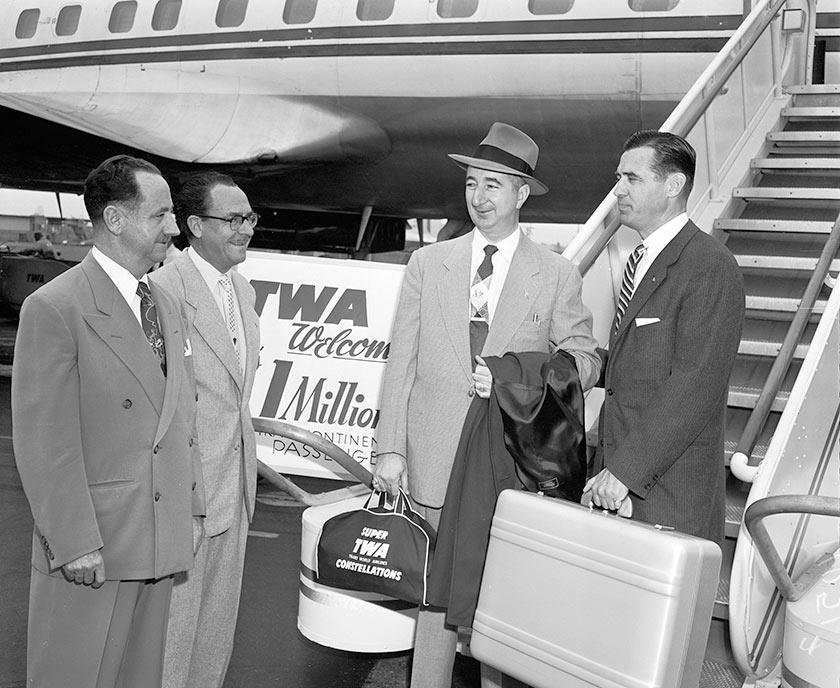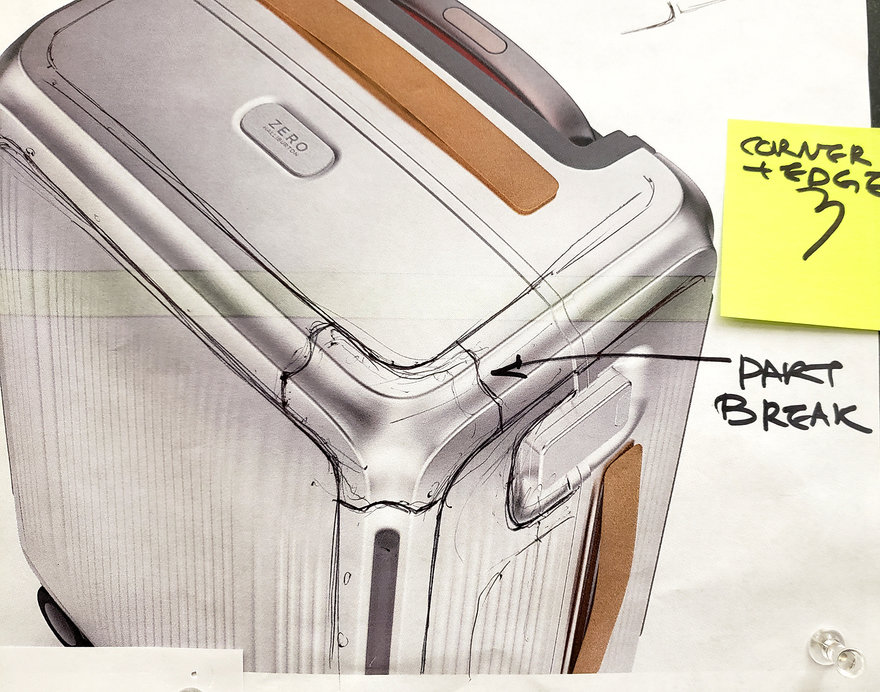Pensa Tackles Aluminum Luggage Redesign for Zero Halliburton
Erle P. Halliburton wasn't an industrial designer, but he was both an industrialist and a designer. In the 1930s he traveled to various oil fields in America, implementing the new method of oil well cementing he'd invented; the frequent travel led him to design his own suitcase, which was made from a then-newfangled material called aluminum.

The suitcases caught on, and in 1938 Halliburton launched his own company to produce them. Movie star Marlene Dietrich was a fan, and either Halliburton formed a relationship with Hollywood or filmmakers found the cases cinemagenic; Halliburton luggage appeared in some 300 films and TV shows.

As you can see in the photo of Dietrich above, the cases were smooth-sided. That looks cool as heck, but given aluminum's properties, those cases probably got pretty banged up. In 1946 a design change was made, adding ribs for better durability.



Over the decades rolling suitcases were added to the lineup, but they didn't look terribly different from earlier iterations. However, in 2017 Zero Halliburton (the company's name from 1952 onwards) decided it was time for a re-design. They contracted Brooklyn-based design firm Pensa, who spent over two years doing the required research and design. Today, the fruits of their labor are officially being unveiled.



"As industrial designers, we saw a real opportunity to bring a fresh point of view to Zero Halliburton," says Mark Prommel, Partner and Design Director at PENSA. "We approached the process as engineers, travelers and observers of human nature, and from that experience, we were able to reimagine everything - from the wheels to the locks and even the packing system - and ultimately designed each individual element to create truly special and extremely functional cases."

One of the things Pensa looked at was the beatings that luggage can take, and they reinforced the edges in a novel way: Rather than adding protruding protective cladding, as with a roadie case, they instead sculpted concave channels into the edges, reinforcing the corners with form-following Y-shaped caps "to mitigate the potential for severe damage more effectively than typical convex-based travel cases."


An extra handle is hidden in an unexpected place--in the bottom, by the wheels. This makes it easier to use both hands to hoist the case up to an overhead bin, or out of a car trunk, when it's fully laden.


The ID tag is also concealed, though it can quickly be peeled back to glance at. In this age of privacy concerns, this makes much more sense to me than the standard approach, where people often have their name and address in full view.

It's impossible to tell this from photos, but the pull handles are "crafted from a high-strength polymer composite with a soft-touch feel reminiscent of a luxury sport watch strap," the company says.

Zero Halliburton's Pursuit Aluminum Collection offers two carry-on sizes as well as two larger sizes for check-in.

They've also got a snazzy attaché case.

Check them out here.
-
oFavorite This
-
Q2Comment
K
{Welcome
Create a Core77 Account
Already have an account? Sign In
By creating a Core77 account you confirm that you accept the Terms of Use
K
Reset Password
Please enter your email and we will send an email to reset your password.




Comments
Arguably the most famous aluminum suitcase is the one that killed Western actor Tom Mix when it hit him in the head after his '37 Cord Phaeton left the road outside of Tucson in 1940.
Nice too see a Rimowa alternative. Too bad they only show half-descent renders. Would love to see photos of the actual thing being a bit worn and banged up.